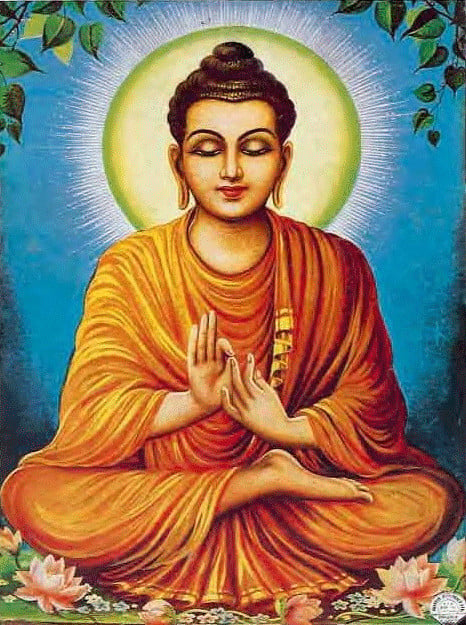
The Spread of Buddhism from India to East Asia - A Tale of How Peace Won
Buddhism, a spiritual and philosophical tradition founded by Siddhartha Gautama, the Buddha, in the 5th century BC, originated in the Indian subcontinent. Over the centuries, however, it transcended geographical, cultural, and linguistic boundaries, spreading extensively across East Asia. Ultimately, it experienced an intricate and multifaceted journey of Buddhism from its birthplace in India to the far reaches of East Asia, encompassing China, Korea, and Japan. We will explore the historical context, key figures, doctrinal adaptations, and the profound impact this movement had on the socio-cultural landscapes of the regions it touched.
Buddhist Thought Was Centered on Peace and Compassion
The historical Buddha, Siddhartha Gautama, was born in Lumbini, near the present-day Indo-Nepal border, around the 5th century BC. His teachings, encapsulated in the Four Noble Truths and the Eightfold Path, offered a new way of understanding human existence and suffering. After attaining enlightenment under the Bodhi tree in Bodh Gaya, the Buddha spent the remainder of his life teaching across the Indian subcontinent.
- The Hemis Monastery: Home of the Legends of Jesus and the Phantoms of the Himalayas
- The Monk and the Poet: Meet the Rebels behind the Legendary “Journey to the West”
Following the Buddha's death, or Parinirvana, around 400 BC, his disciples convened the First Buddhist Council to compile his teachings, which laid the foundation for the Buddhist canon. Buddhism's initial spread within India was facilitated by the establishment of monastic communities (sanghas) and the patronage of influential rulers. The most notable among these was Emperor Ashoka of the Maurya Dynasty, who, after his conversion to Buddhism following the bloody Kalinga War in the 3rd century BC, became a pivotal figure in the propagation of Buddhism across the region. Ashoka's reign marked the first major wave of Buddhist missionary activities both within and beyond the Indian subcontinent.

Gautam Buddha in meditation. (Krishna Kumar Shrestha / CC BY-SA 4.0)
Ashoka's efforts in spreading Buddhism beyond India included sending missionaries to various regions, including Central Asia. This region played a crucial role as a conduit for the further transmission of Buddhism. By the 1st century AD, Buddhism had reached the Central Asian regions of Bactria and Gandhara. These areas, characterized by a confluence of Greek, Persian, and Indian cultures, became fertile grounds for the development and dissemination of Buddhist thought and art.
“King Ashoka also actively proselytized outside his kingdom by sending missions to distant lands, sometimes acting upon the invitation of foreign rulers, such as King Devanampiya Tissa of Sri Lanka. Other times he would send monks as envoys at his own initiative. The visiting monks would not pressure others to convert, but would just simply make the Buddha’s teachings available, allowing people to choose for themselves. This is evidenced by the fact that in such places as South India and southern Burma, Buddhism soon took root, while in places such as the Greek colonies in Central Asia, there is no record of any immediate impact.”
Dr. Alexander Berzin, 1996, "Buddhism and Its Impact on Asia.", Cairo University, Center for Asian Studies
From Town to Town, Along the Great Silk Road
Buddhist monasteries along the Silk Road, such as those at Bamiyan and Taxila, became centers of learning and cultural exchange. The syncretic nature of Gandharan art, which incorporated Greco-Roman elements, exemplifies the cultural exchanges facilitated by the spread of Buddhism. These monasteries also served as rest stops for traders and travelers, further aiding the diffusion of Buddhist teachings and practices, as well as different cultural elements from the Indian subcontinent.
Buddhism's entry into China is traditionally dated to the Han Dynasty, around the 1st century AD. The exact circumstances of its introduction are debated, but it is generally believed that Buddhist ideas entered China through the Silk Road, brought by merchants, missionaries, and scholars. The earliest known reference to Buddhism in Chinese historical records is in the "Book of the Later Han," which mentions the arrival of Buddhist missionaries. The translation of Buddhist scriptures into Chinese began in earnest during the 2nd century AD, with figures such as An Shigao and Lokaksema playing prominent roles. These early translations laid the groundwork for the establishment of Buddhist communities and the gradual assimilation of Buddhist ideas into Chinese thought. However, Buddhism at first faced challenges, including resistance from Confucian scholars who viewed it as a foreign and potentially subversive influence.




